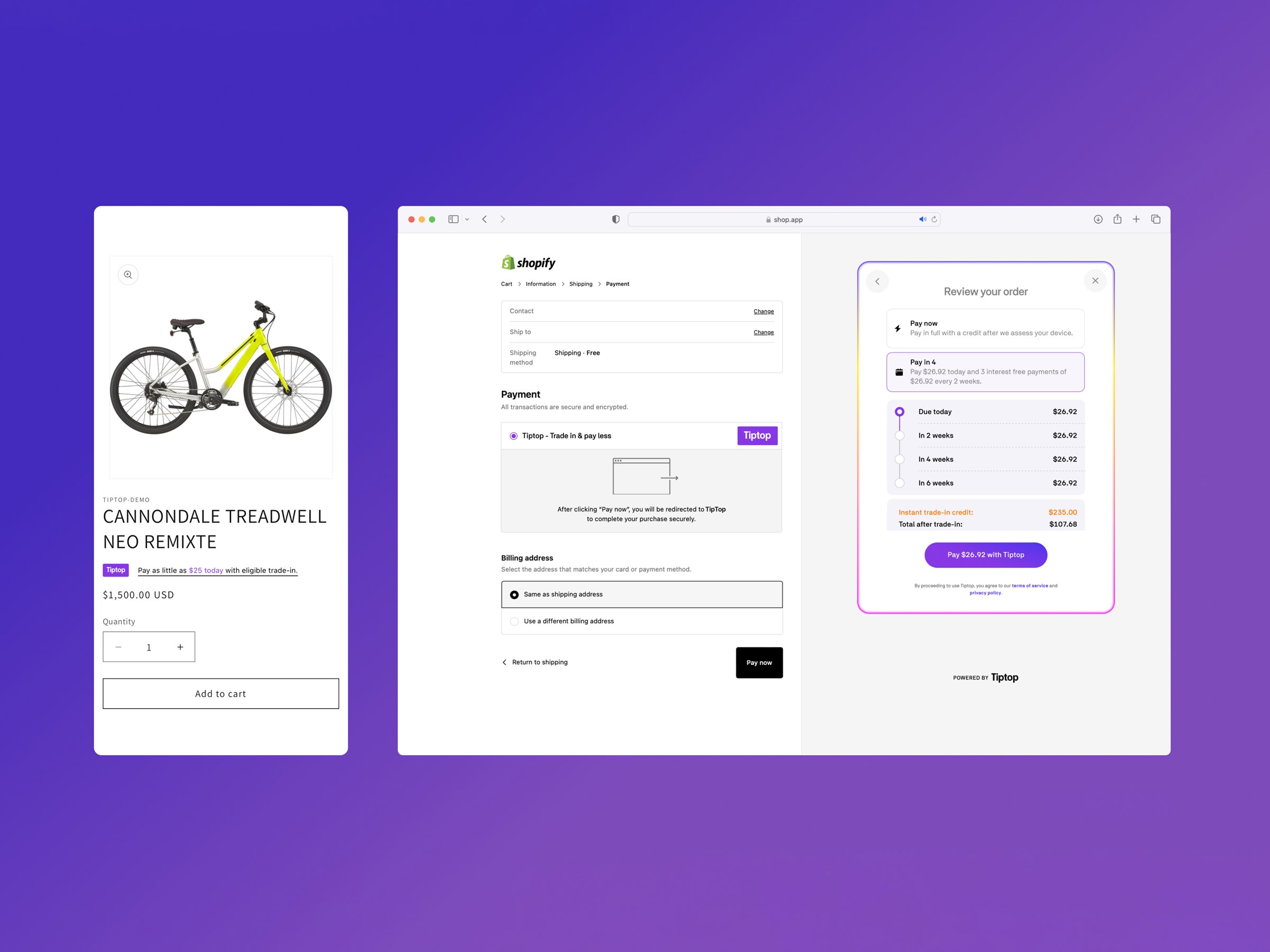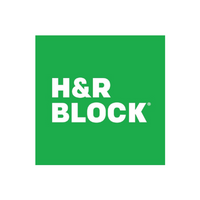The man who cofounded Postmates, an app that brings you stuff, has a whole new service that wants to take your stuff away.
Bastian Lehmann’s latest startup is called Tiptop (a name that comes from a children’s book, and is not a play on TikTok, Lehmann says) and first launched in 2023 as an app. It connected to users’ Gmail accounts and scoured their inboxes for receipts of the things they purchased online so it could estimate trade-in prices for reselling those things later. It also then offered access to a select marketplace of products in which it used that price data to offer trade-in discounts on other stuff.
That app isn’t going away, but now Tiptop has morphed into a much more fluid service that you might see showing up as a payment option within ecommerce checkout experiences across the web. You’ll be able to click on Tiptop’s logo right next to PayPal, Apple Pay, and the other familiar payment systems. In addition to buy now, pay later options like those offered by Klarna or Affirm, Tiptop will also offer a trade-in service, letting you offload a product that's been sitting around your house for a while in order to help pay for something new. Lehmann says they’ll take just about anything that is TV-sized or below, from electronic devices to home goods.
Here’s how it works. Once you’re ready to complete a purchase on a shop’s checkout page, click the option to checkout with Tiptop. You will then be prompted to select the device you want to trade in via a dropdown menu that asks for the brand, model, and condition of the thing you’re getting rid of. Tiptop shows you a dollar amount denoting how much the trade-in will take off the price of the sale. If you agree with the math, you complete the transaction. You can choose to pay for the new purchase in full and then receive a partial refund in the amount of the trade-in value after Tiptop has received the shipment of the device you’re trading in. Or you can choose to pay for the new item in installments, in which case the trade-in discount is applied instantly. After the transaction, Tiptop provides you with a prepaid shipping label and asks you to mail your unwanted device back within a few days. (You’ll need to provide your own box.) After Tiptop receives your trade-in, it will resell the item and keep whatever profit it makes.
Lehmann says Tiptop has cataloged around 50,000 specific products that it will accept as trade-ins. The company will take things like your old phones, laptops, and baby strollers, although some items aren’t eligible for trade-in because they’d be too costly to ship. (You can’t trade in your fridge, sorry.) Behind the scenes, Tiptop uses some algorithms to dynamically estimate the value of everything on its list based on market values and some adjustments for depreciation. The trade-in prices you’ll be offered will obviously vary. Lehmann says the average discount across all devices that have come through Tiptop’s system so far is about $287.
Tiptop is enabled as a payment gateway for Shopify, which means any online merchant that uses Shopify can enable Tiptop as a payment option. Already on the Tiptop wagon are sites like Nothing and Phonedaddy, the baby storage company Cradlewise, the gaming controller maker Backbone, and King of Christmas—a store that sells exactly what the name implies. The merchants selling the item pay a fee to Tiptop just like they would for any other payment processor. That fee is somewhere between 5 and 12 percent, Lehmann says, depending on the value of the item being traded in.
Trade Union
The genesis of Tiptop started after Uber bought Postmates in 2020, when Lehmann says he took some time off to be with family and consider what his post-Postmates life might look like. Turns out the answer was very close to home.
“After a while I started thinking about how my house is full of stuff,” he says.
Not only that, but it was full of the kind of stuff he says is increasingly hard to get rid of. Today’s consumer electronics typically have very quick upgrade cycles, with companies trying to breathlessly parkour their customers into buying the newest thing every year. And once you do, there aren’t always good ways to get rid of last year’s item that you don’t need anymore. Marketplaces like eBay or Craigslist require some lift; you need to take photos, write a listing, post it, then interact with buyers and ultimately ship it out yourself or go meet somebody in a parking lot for a handoff. Trade-in programs offered by manufacturers like Apple or Google are limited to products sold by that manufacturer, and there are sometimes strings attached, like committing to buying another device or service plan, or only getting store credit. Rather than deal with these limitations and hassles, people often just put their old device into a box or a drawer, where it goes unused.
Lehmann sees all that stuff you’ve got lying around as a resource.
“In a nutshell, what Tiptop tries to do is give US households access to a bank account they didn't know about,” Lehmann says. “If you want the newest thing, you need to do something with the old thing.”
It’s possible that Tiptop could help usher in a new era of reusing devices, but it’s also possible the opposite could happen. Lucas Gutterman, the director of the Designed to Last campaign at the advocacy group US PIRG, worries that helping people pay less for a newer device could entice them to upgrade more often, perpetuating the demand for that sort of rapid upgrade cycle that Lehmann says is part of the problem.
“It’s great to incentivize people to reuse and recycle,” Gutterman says, “but are they just using this money to buy more crap they don't need? Is this just a way of fueling more consumption so you can get the newest iPhone and trade an old one?”
Lehmann doesn’t think that will be the primary use case for his service.
“It's tough economic times,” Lehmann says. “Thirty-seven percent of Americans had at least one late fee in the last 12 months on any sort of payment. So we're living in a world where things become more expensive, and we think this is actually the first payment method that helps you pay less. It doesn't just help you pay over time, it doesn't just help you pay next month. You're significantly paying less for an item that you want to buy.”
Tiptop’s trade-in model may give it an edge, but buy now, pay later programs have been criticized (including by PIRG) for potentially taking advantage of people who may not have enough experience with financial systems to fully grasp what kind of debt they’re incurring. After all, BNPL plans can be enticing, offering the ability to pay for something in more manageable installments without interest. Add another cherry on top of that in the form of a discount for your unwanted stuff and people might be more inclined to make a purchase that would normally be financially out of reach.
Gutterman says that buy now, pay later plans don’t save people money. Instead, they just encourage consumers to buy more stuff they don't need and can’t afford, he says.
“Ultimately, the solution is that we just need to stop buying a new phone every other year,” Gutterman says. “That’s the real solution to having less, it shouldn’t be an incentive to buy more stuff.”
There’s also the fact that by design, the customer is likely to get less money from Tiptop than if they went out and took the time and effort to sell their stuff themselves.
“Our model does not aim to be the most money that you can get for any of these items,” Lehmann says. “But I believe that what we offer is better—and that is a guaranteed sale and ultimate convenience.”
That is enticing for sure, but it also puts Tiptop in the position of doing all the hard work to sell your unwanted things. The margins in this corner of the market—known as “reverse logistics”—are often razor thin, and Tiptop could have a tough go of it.
“Look, I'm seasoned enough to tell you that this is likely not gonna work because startups fail, right?” Lehmann says. “But we are very excited about it. So now we have to prove that people would like to use this.”







